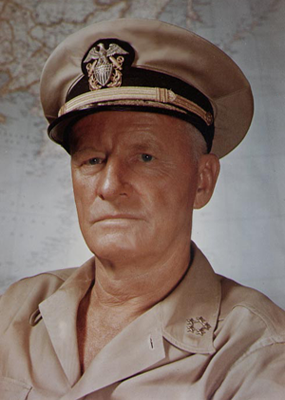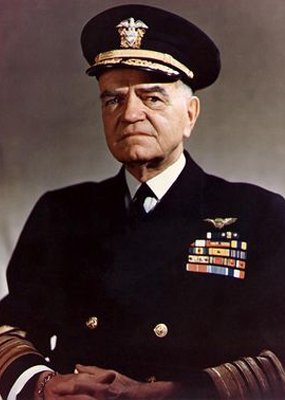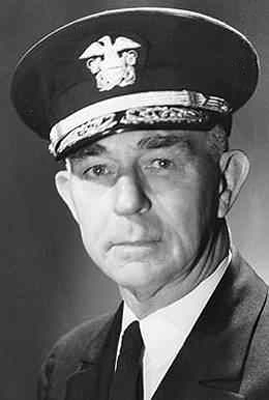
The Admirals

Admiral Chester W. Nimitz
Chester William Nimitz, Sr. was a fleet admiral of the United States Navy. He played a major role in the naval history of World War II as Commander in Chief, U.S. Pacific Fleet and Commander in Chief, Pacific Ocean Areas, commanding Allied air, land, and sea forces during World War II.
After the Japanese attack on Pearl Harbor (December 1941), Nimitz was elevated to commander in chief of the Pacific Fleet, a command that brought both land and sea forces under his authority. By June 1942 he had proudly announced the decisive victory at the Battle of Midway and the Coral Sea, where enemy losses were 10 times greater than those of the United States at Pearl Harbor. In succeeding years, the historic battles of the Solomon Islands (1942–43), the Gilbert Islands (1943), the Marshalls, Marianas, Palaus, and Philippines (1944), and Iwo Jima and Okinawa (1945) were fought under his direction.
The Japanese capitulation was signed aboard his flagship, the USS Missouri, in Tokyo Bay on Sept. 2, 1945. In December 1944 Nimitz had been promoted to the Navy’s newest and highest rank—that of fleet admiral.

Admiral William "Bull" Halsey
William F. Halsey, Jr. was a U.S. naval commander who led aggressive campaigns in the Pacific theater during World War II. He was a leading exponent of warfare using carrier-based aircraft and became known for his daring tactics.
Halsey became a naval aviator in 1935 and reached the rank of vice admiral in 1940. After the Japanese attack on Pearl Harbor (December 1941), Halsey’s task force was virtually the only operational battle group left in the Pacific. While the United States rebuilt its fleet, he directed surprise forays on Japanese-held islands in the Marshalls and Gilberts as well as on Wake Island. In April 1942 his group maneuvered close enough to Tokyo for Lieutenant Colonel James Doolittle’s planes to carry out the first bombing of the Japanese capital.
In June 1944 Halsey became commander of the 3rd Fleet and led his carrier task force in brilliant air strikes. He was responsible for covering and supporting U.S. land operations as well as finding and destroying much of the Japanese fleet in the Battle of Leyte Gulf (October). He led U.S. forces in the final naval operations around Okinawa in the Ryukyu Islands from May 28, 1945, to September 2, when the Japanese surrendered.
Halsey was promoted to the rank of fleet admiral in December 1945, and he retired in 1947.

Admiral Richmond Kelly Turner
In June 1942, Admiral Kelly Turner was assigned to the Pacific war zone to take command of the Amphibious Force, South Pacific Force. Over the next three years, while holding a variety of senior Pacific Fleet amphibious force commands as both a Rear Admiral and Vice Admiral, he planned and executed the conquest of enemy positions in the south, central and western Pacific, contributing greatly to ultimate victory in the World's greatest naval war.
In the rank of Admiral, he would have commanded the amphibious component of the invasion of Japan, had that nation not capitulated in mid-1945. Extensive planning for the invasion of the Japanese home islands, codenamed OPERATION DOWNFALL (scheduled for November 1945), were well underway.
Following the end of World War II, Admiral Turner served on the Navy Department's General Board and was U.S. Naval Representative on the United Nations Military Staff Committee. He retired from active duty in July 1947. Admiral Richmond K. Turner died in Monterey, California, on 12 February 1961.

